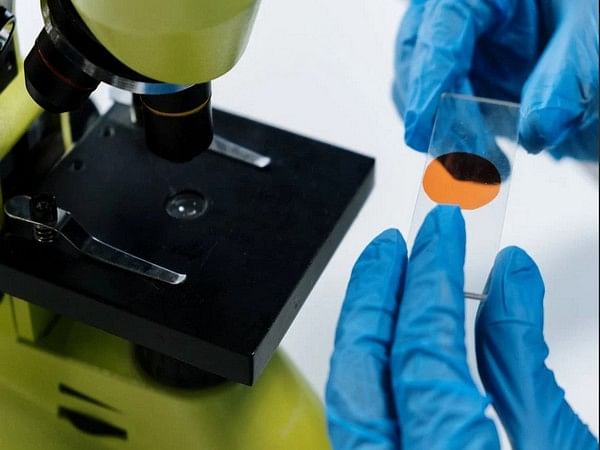Washington D.C. [USA], September 4 (ANI): The movement of chromatin, the substance from which DNA is formed, can aid in the efficient repair of DNA damage in the human nucleus, according to a multidisciplinary team of researchers from Indiana University. This result may improve cancer detection and therapy.
The findings were recently published in the Proceedings of the National Academy of Sciences.
DNA damage happens naturally in human body and most of the damage can be repaired by the cell itself. However, unsuccessful repair could lead to cancer.
“DNA in the nucleus is always moving, not static. The motion of its high-order complex, chromatin, has a direct role in influencing DNA repair,” said Jing Liu, an assistant professor of physics in the School of Science at IUPUI. “In yeast, past research shows that DNA damage promotes chromatin motion, and the high mobility of it also facilitates the DNA repair. However, in human cells this relationship is more complicated.”
Liu and his colleagues found that chromatin on the site of DNA damage moves much faster than those away from the DNA damage. They also found that the chromatin in cell nuclei is not moving randomly. It’s a coherent movement, with the DNA moving as a group over a short distance.
The researchers also found evidence that DNA damage may affect the DNA’s group movement by reducing the coherence. These findings indicate that chromatin motion is under tight control when DNA is damaged. This is important to prevent the damaged DNA from harmful contact and to improve the accuracy and efficacy of DNA repair, Liu said.
“Our findings reveal a fundamental role of the chromatin motion in DNA damage response and DNA repair,” Liu said. “These findings can help to understand the mechanism of DNA repair in human cells and cancer initiation in humans. Practically, we can use these findings as the metrics for the drug response of many different drugs used to treat cancer. We can test different drugs to see if the chromatin motion can be modified to enhance DNA repair.”
In order to conduct this research, Liu and his colleagues had to develop the computational tools necessary for analyzing massive amounts of data. With data sizes as large as a terabyte in some cases, Liu and his colleagues worked with IU’s University Information Technology Services to establish the Scalable Data Archive of highly dynamic cell images, which centralizes data storage, data transfer, and data processing.
In the future, the researchers hope to study single DNA molecules and how they are moving, and how individual and group dynamics differ and change in response to DNA damage. They’d also like to learn more about DNA movement in specific genes that are known to be more vulnerable to DNA damage. (ANI)
This report is auto-generated from ANI news service. ThePrint holds no responsibility for its content.



